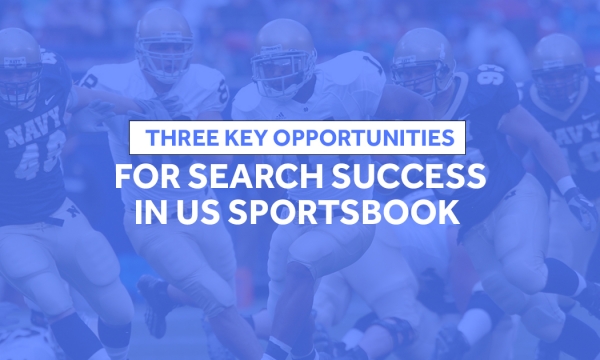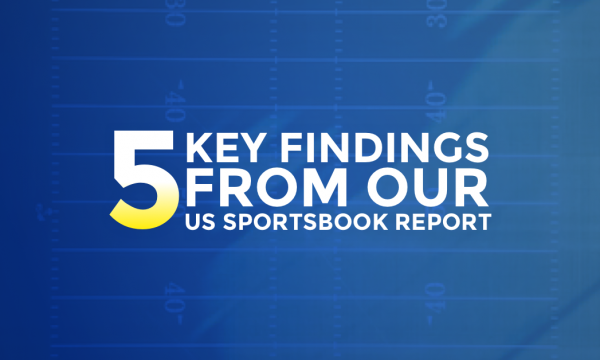In 2015, William Hoyle, Strategic Analyst at Stickyeyes delved deeper into the UK online bingo market (http://egrdigitalmarketing.com/news/major-bingo-brands-search-visibility-declining-report-says/) and discovered that brands such as Sky Bingo, Cheeky Bingo and Mecca Bingo could be losing up to 56% of their annual non-brand organic traffic to the lesser known operators.
The research revealed that rankings for the core non-brand keyword terms were actually been obtained by the smaller challengers in the market and therefore actually damaging visibility for the larger, more established brands.

The state of the market
Search engine results pages in the online bingo market have a history of volatility and with this in mind, it has become crucial for brands to adopt a sustainable and long-term digital strategy that is based around delivering meaningful and engaging content to the right audiences, in the right places, at the right time.

The market leader in the online bingo SERPs is Foxy Bingo, followed by Sky Bingo which has experienced a significant 38% increment in organic visibility over the survey period of August to December 2015, and Mummies Bingo, which has seen a generous 204% growth in visibility in just three months, signifying them as the second most visible brand.
Bingo Godz however has lost its sixth most visible brand position and as a result, is no longer part of our top ten. This, on the face of it, suggests that the smaller brands may be beginning to lose their visibility.

So, how do the more established online brands regain their superior stature?
Only a minority of brands seem to understand who their audiences are, with our analysis suggesting that many opportunities for engaging audiences through content throughout the customer journey are being left unutilised.
The importance of understanding your audience
The perceived customer for online bingo brands has long been seen as female, accompanied by the lifestyle characteristics of a stay-at-home mum. We wanted to test this statement. Further investigation into the ten most visible brands within the market highlighted that the typical audience demographic does in fact differ dependent on the brand in question.
The findings actually dismiss the previously defined female stereotype, with 36% of the top ten site traffic and 38% of the entire online bingo industry traffic coming from male users.
MummiesBingo.com, a brand name that suggests an acknowledgement of the industry stereotype, actually receives 53% of their traffic from a male audience. It is a similar case for Foxy Bingo, which achieves a 41% male following.
Another factor that breaks the stereotype is age, and the graph below shows how the industry average doesn’t necessarily correspond with figures obtained on Foxy Bingo, which has a customer base that is fairly evenly split across all age groups. A particular abnormal figure is that of the 18-24 group, which is noted to be a significant contrast to that of the stated average.

Is this insight being applied to marketing activity?
This is an area where many brands seem to fall short, although Foxy Bingo has managed to utilise this data to its advantage by tailoring both their digital and offline strategies to the various audiences. This has led to prosperous digital strategies being derived from preceding offline approaches.
The brand ensures that they connect with each of their audiences by way of varying their advertising spend across markets. An example of this is their partnership with Rugby League and the sponsorship agreement with The Only Way Is Essex; two very different partnerships targeting very different audience personas.
The partnerships have constituted in a number of inviting campaigns, leading to high engagement levels and a number of authoritative links for Foxy Bingo. This has helped to bolster its market leader spot.
The reality for the majority of brands on the other hand is that the focus is still heavily targeted towards the female audience, especially when looking at content distributed across social media platforms.
Sky Bingo and Wink Bingo in particular are noted to deviate from the norm when publishing social content, as both of these brands deliver a more generic approach. The content does favour a female demographic, but the appeal to the male audience is still visible and much more so when compared to other bingo brands.
The largest proportion of the male audience is obtained by Sky Bingo, with 20% of its Facebook following being male populated.

While Foxy Bingo may seem to achieve an almost equal split in traffic by gender type, this doesn’t transfer over to their social media channels, with the brand’s Facebook audience being primarily female (95%).
This issue for Foxy Bingo could be alleviated by introducing a more rounded social strategy that targets both male and female audiences, rather than singling out specific persona types. By doing so, audiences can then be engaged with on a much longer term through content and promotions.
The increasing importance of understanding your personas
Many brands follow the misconception that their customers will automatically fit into a very broad demographic bracket and in turn, ignore their more individual interests. The concentration should therefore be very much aimed towards creating multiple persona groups and developing a detailed understanding of all of your customer groups’ needs and expectations.

One area to keep in mind when wanting to understand your customers further is the data captured through the CRM process, this insight combined with Google Analytics will all aid in the development and relationship your brand has with its audience.
By grasping the way your customers choose to engage with your brand you can then begin to tailor individual content pieces to the various points within the purchasing process. By managing this process you can then begin to apply specific media, be that owned, earned or paid, dependant on the movements your target persona are making.
Social media, if applied correctly, is a great tool that can help reach large audiences. With the introduction of advanced targeting, you can now be even more specific with regard to who you communicate with and when, allowing you to single out the 5% of your audience that represent the best opportunity of commercial return. Again, there are processes you can follow (https://www.stickyeyes.com/intelligence/how-to-drive-roi-from-social-advertising/).
In short, you need to be aware of who your customers are and where their interests lie, be sure to use all the tools at your disposal and in doing so, your content strategy will begin to form.






